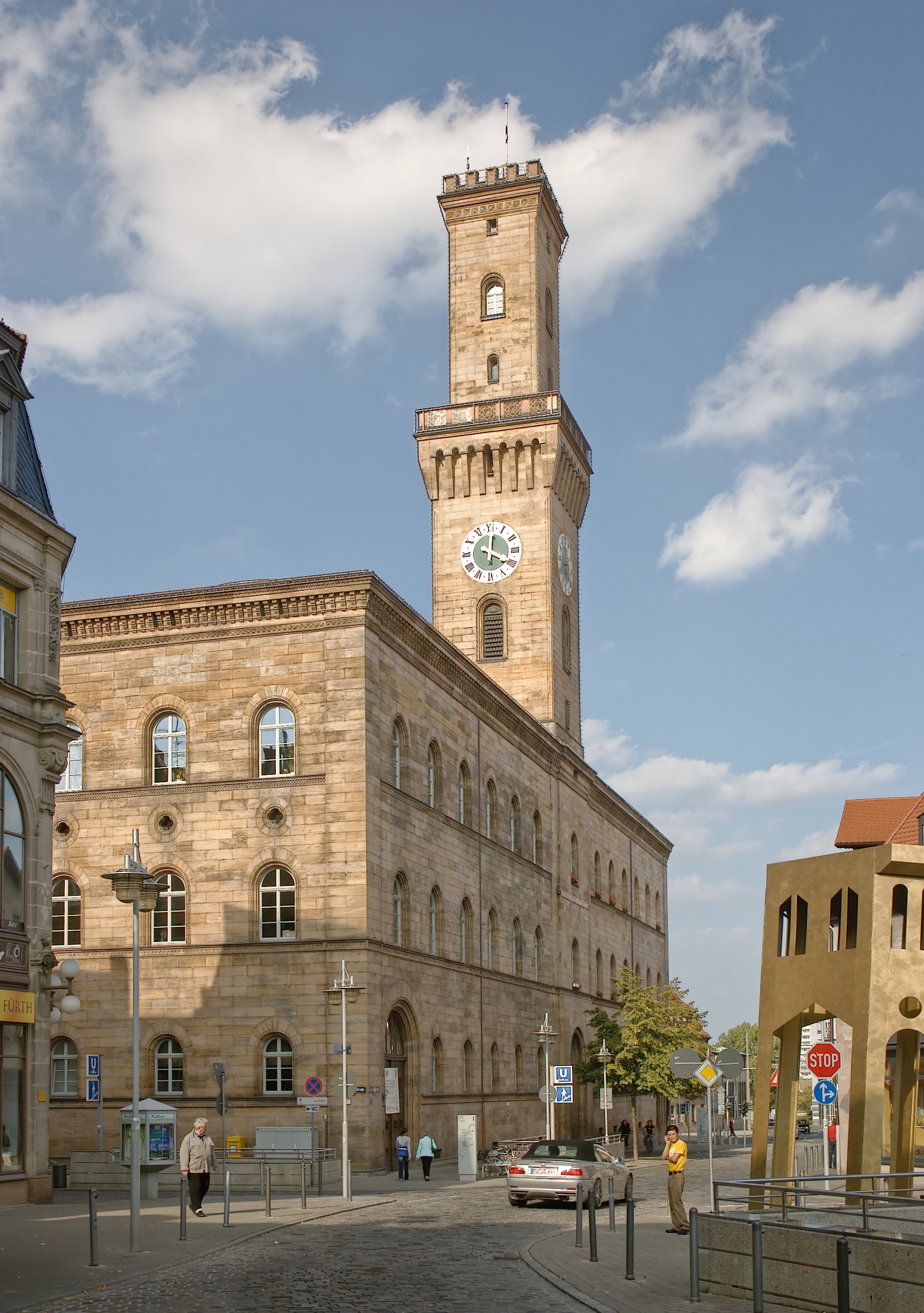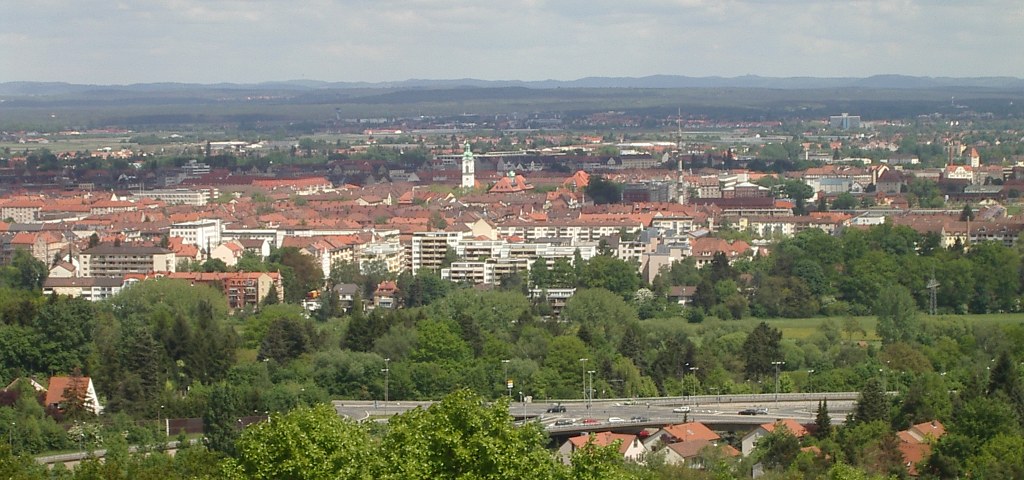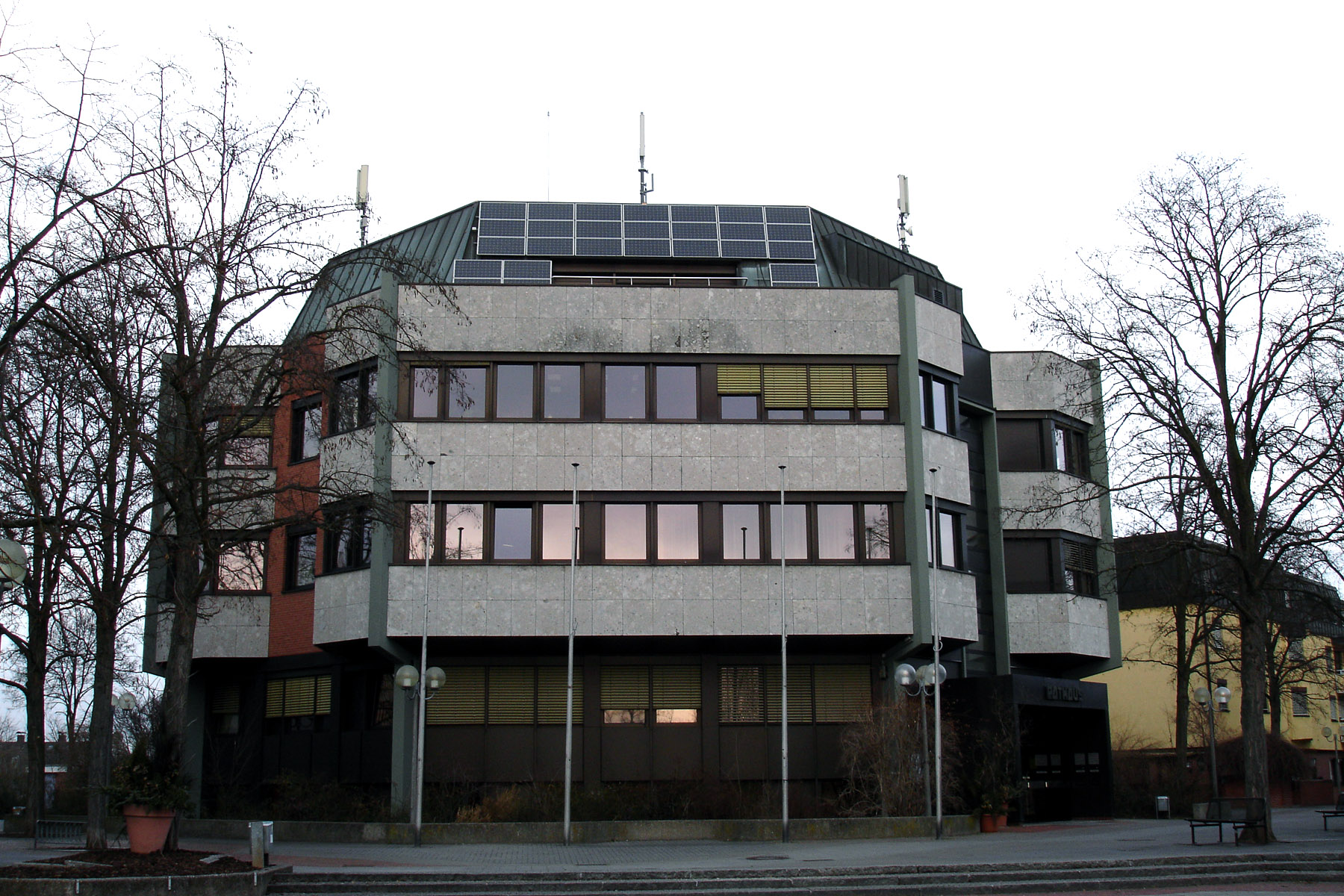|
Fürth
Fürth (; East Franconian: ; yi, פיורדא, Fiurda) is a city in northern Bavaria, Germany, in the administrative division ('' Regierungsbezirk'') of Middle Franconia. It is now contiguous with the larger city of Nuremberg, the centres of the two cities being only apart. Fürth is one of 23 "major centres" in Bavaria. Fürth, Nuremberg, Erlangen and some smaller towns form the "Middle Franconian Conurbation", which is one of the 11 German metropolitan regions. Fürth celebrated its thousand year anniversary in 2007, its first mention being on 1 November 1007. Geography The historic centre of the town is to the east and south of the rivers Rednitz and Pegnitz, which join to form the Regnitz to the northwest of the Old Town. To the west of the town, on the far side of the Main-Danube Canal, is the Fürth municipal forest (''Fürther Stadtwald''). To the east of Fürth, at roughly the same latitude, lies Nuremberg, and to the north is the fertile market-gardening area ... [...More Info...] [...Related Items...] OR: [Wikipedia] [Google] [Baidu] |
Battle Of Fürth
The Battle of Fürth was fought on September 3, 1632 between the Roman Catholic, Catholic forces of Holy Roman Emperor Ferdinand II, Holy Roman Emperor, Ferdinand II and the Protestant forces of Gustavus Adolphus of Sweden, King Gustavus II (Gustavus Adolphus) of Swedish Empire, Sweden during the Swedish intervention in the Thirty Years' War, period of Swedish intervention in the Thirty Years War. The tactical victory by the Catholic forces allowed the Imperial army to quickly advance into Electorate of Saxony, Saxony, while the Swedish forces were forced into retreat. Regional background Fürth was a market town, whose marketing license had been suspended under Holy Roman Emperor Henry III, Holy Roman Emperor, Heinrich III, losing the privilege and all that went with it, to nearby Nuremberg, Nürnberg (English: Nuremberg) shortly after its founding. This situation changed after Heinrich's death, and in 1062 Fürth was once again permitted to have its own market. However, F� ... [...More Info...] [...Related Items...] OR: [Wikipedia] [Google] [Baidu] |
Bayerische Ludwigsbahn
The Bavarian Ludwig Railway (''Bayerische Ludwigseisenbahn'' or ''Ludwigsbahn'') was the List of the first German railways to 1870, first steam-hauled railway opened in Germany. The ''Königlich privilegierte Ludwigs-Eisenbahn-Gesellschaft'' ("Royal Privileged Ludwig Railway Company", later called the ''Ludwigs-Eisenbahn-Gesellschaft'') received a concession to build a railway from Nuremberg to Fürth (6km) in the States of Germany, state of Kingdom of Bavaria, Bavaria on 19 February 1834. Background The first reports from England over the planning of railways attracted great attention in Germany, particularly in Bavaria, where the road between the important commercial cities of Nuremberg and Fürth was the busiest road connection in the kingdom. Bavarian interest was also stimulated by Friedrich List’s advocacy of an all-German railway system and the reports of Joseph von Baader, whom Ludwig I of Bavaria, King Ludwig had sent to England to study railways. After a discussio ... [...More Info...] [...Related Items...] OR: [Wikipedia] [Google] [Baidu] |
Cadolzburg
Cadolzburg (outdated also ''Kadolzburg'', colloquially pronounced "Kalschbuʳch" or "Sporch" ) is a municipality in the Middle Franconian district of Fürth, in Bavaria, Germany. It is situated west of Fürth. Its name derives from its central castle, first being mentioned in the year 1157. Geography The topography varies significantly in its height. Neighborhood Neighboring Municipalities are: (beginning in the north then going clockwise) * Veitsbronn * Seukendorf * Fürth * Zirndorf * Ammerndorf * Großhabersdorf * Langenzen Districts Cadolzburg consists of the city itself and 15 farther districts: History Middle Ages The place was first mentioned in 1157 when the reeve of Kadolzburg, Helmericus de Kadoldesburc, agreed on a territorial exchange between the diocese of Würzburg the Heilsbronn Abbey. So the name derives from ''Burg des Kadold'' meaning "Kadold's castle". If the castle had been built by Duke Kadold, who in the year 793 founded the Herrieden Ab ... [...More Info...] [...Related Items...] OR: [Wikipedia] [Google] [Baidu] |
Erlangen
Erlangen (; East Franconian: ''Erlang'', Bavarian: ''Erlanga'') is a Middle Franconian city in Bavaria, Germany. It is the seat of the administrative district Erlangen-Höchstadt (former administrative district Erlangen), and with 116,062 inhabitants (as of 30 March 2022), it is the smallest of the eight major cities ('' Großstadt'') in Bavaria. The number of inhabitants exceeded the threshold of 100,000 in 1974, making Erlangen a major city according to the statistical definition officially used in Germany. Together with Nuremberg, Fürth, and Schwabach, Erlangen forms one of the three metropolises in Bavaria. With the surrounding area, these cities form the European Metropolitan Region of Nuremberg, one of 11 metropolitan areas in Germany. The cities of Nuremberg, Fürth, and Erlangen also form a triangle on a map, which represents the heartland of the Nuremberg conurbation. An element of the city that goes back a long way in history, but is still noticeable, is the settl ... [...More Info...] [...Related Items...] OR: [Wikipedia] [Google] [Baidu] |
Stein, Bavaria
Stein (East Franconian: ''Schdah'') is a town in the district of Fürth, in Bavaria, Germany. It is situated 7 km south of Fürth, and 7 km southwest of Nuremberg (centre). Geography Stein is located in the metropolitan area Nürnberg/Fürth/Erlangen in Middle Franconia, Bavaria and is a part of the district of Fürth. It adjoins to Nuremberg in the north-west and lies on the left bank of the river Rednitz. Neighboring municipalities are Nuremberg, Rohr, Roßtal, Zirndorf and Oberasbach. Stein is divided into 11 districts: History Stein has first been mentioned in a document dating back to 1296. The origin of the settlement is linked to the first ''Rednitzbrücke'', a bridge which first crossed the river Rednitz. It was referred to as “Steinbruke” and probably caused the town's naming. In 1498, the two famous sculptors Veit Stoss and Adam Kraft were appointed as counselors for construction works on the bridge. Between the 15th and the 17th century, Stei ... [...More Info...] [...Related Items...] OR: [Wikipedia] [Google] [Baidu] |
Zirndorf
Zirndorf () is a town, which is part of the district of Fürth. It is located in northern Bavaria, Germany in the Regierungsbezirk of Middle Franconia. Neighbouring municipalities The following towns and municipalities share borders with Zirndorf; they are listed in clockwise order, starting in the north: * Fürth * Oberasbach * Stein * Roßtal * Ammerndorf * Cadolzburg History The first mention of the town occurs in a document dated 9 September 1297. The town was virtually destroyed during the Thirty Years' War, though the brewing industry established in the late seventeenth century helped in its recovery. In the mid-nineteenth century, the toy industry contributed to the town’s industrial development, and remains important today. Pinder Barracks In 1935 the city of Zirndorf applied to the German Reich Administration to have a caserne built here. The application was approved, with the condition of Reichsmarschall Hermann Göring, that construction must be in the Fran ... [...More Info...] [...Related Items...] OR: [Wikipedia] [Google] [Baidu] |
Nuremberg
Nuremberg ( ; german: link=no, Nürnberg ; in the local East Franconian dialect: ''Nämberch'' ) is the second-largest city of the German state of Bavaria after its capital Munich, and its 518,370 (2019) inhabitants make it the 14th-largest city in Germany. On the Pegnitz River (from its confluence with the Rednitz in Fürth onwards: Regnitz, a tributary of the River Main) and the Rhine–Main–Danube Canal, it lies in the Bavarian administrative region of Middle Franconia, and is the largest city and the unofficial capital of Franconia. Nuremberg forms with the neighbouring cities of Fürth, Erlangen and Schwabach a continuous conurbation with a total population of 800,376 (2019), which is the heart of the urban area region with around 1.4 million inhabitants, while the larger Nuremberg Metropolitan Region has approximately 3.6 million inhabitants. The city lies about north of Munich. It is the largest city in the East Franconian dialect area (colloquially: "F ... [...More Info...] [...Related Items...] OR: [Wikipedia] [Google] [Baidu] |
Oberasbach
Oberasbach is a municipality in the district of Fürth, in Bavaria, Germany. It is situated 6 km southwest of Fürth, and 10 km west of Nuremberg (centre). Stadtrat The local council has 24 members. The election in 2020 showed the following results: * 9 seats (CSU) * 4 seats (The Greens) * 3 seats (Free voters) * 3 seats (SPD) * 2 seats (BI Oberasbach) * 1 seat (AfD) * 1 seat (FDP) * 1 seat (The Left) Twin towns Oberasbach is twinned with: * Niederwürschnitz, Germany * Oława, Poland * Riolo Terme, Italy Personalities * Steffen Weinhold, (born 1986), handball player * Deniz Aytekin Deniz Aytekin (born 21 July 1978) is a German football referee. He referees for TSV Altenberg of the Bavarian Football Association. Aytekin is a former FIFA referee, and was ranked as a UEFA elite category referee. Refereeing career Aytekin ref ..., (born 1978), football referee * Maurice Müller, (born 1992), soccer player See also * References Fürth (district)< ... [...More Info...] [...Related Items...] OR: [Wikipedia] [Google] [Baidu] |
Bavaria
Bavaria ( ; ), officially the Free State of Bavaria (german: Freistaat Bayern, link=no ), is a state in the south-east of Germany. With an area of , Bavaria is the largest German state by land area, comprising roughly a fifth of the total land area of Germany. With over 13 million inhabitants, it is second in population only to North Rhine-Westphalia, but due to its large size its population density is below the German average. Bavaria's main cities are Munich (its capital and largest city and also the third largest city in Germany), Nuremberg, and Augsburg. The history of Bavaria includes its earliest settlement by Iron Age Celtic tribes, followed by the conquests of the Roman Empire in the 1st century BC, when the territory was incorporated into the provinces of Raetia and Noricum. It became the Duchy of Bavaria (a stem duchy) in the 6th century AD following the collapse of the Western Roman Empire. It was later incorporated into the Holy Roman Empire, be ... [...More Info...] [...Related Items...] OR: [Wikipedia] [Google] [Baidu] |
Vach
Vach is a district in the city of Fürth, Germany. Originally a separate town, it was incorporated into Fürth in 1972. It is first mentioned in documents concerning Gundekar II of Eichstätt in 1059. As of 1961, Vach has an area of 8.208 km². The village is located between the Rhine–Main–Danube Canal and the Regnitz, into which the Zenn and, further north, the Michaelbach flows. The flood plain of Regnitz and Zenn is listed as a landscape conservation area. The village has a population of 2815 and 712 inhabited houses as of 1987. Transportation The station " Vach Bahnhof" is a regular stop on the railway line between Fürth and Erlangen, but it is located far away from the district Vach in the district of Stadeln. Vach is also reachable by the motorway A74; from the north by the slip road "Eltersdorf" and from the south by the slip road "Ronhof". Sights The church, rectory and the "Kantorat" form an attractive ensemble of monuments. The church with its western tower an ... [...More Info...] [...Related Items...] OR: [Wikipedia] [Google] [Baidu] |
Pegnitz River
The Pegnitz () is a river in Franconia in the German state of Bavaria. The Pegnitz has its source in the town of the same name at an altitude of and meets the Rednitz at in Fürth to form the Regnitz river. But often esp. by local people the long Fichtenohe is regarded as upper course of the Pegnitz. The Fichtenohe source is in Lindenhardt Forest north of Pegnitz town. The Pegnitz is about long, with Fichtenohe . The river is inhabited by numerous ducks, coots, swans, and gulls. Tributaries * Fichtenohe (left tributary) * Flembach (left tributary) * Hirschbach (left tributary) * Högenbach (left tributary from the Pommelsbrunn direction) * Happurger Bach (left tributary) * Sittenbach (right tributary) * Hammerbach (left tributary) * Sandbach (left tributary) * Schnaittach (right tributary) * Röttenbach (right tributary) * Bitterbach (right tributary) * Röthenbach (left tributary) * Langwassergraben (right tributary) * Tiefgraben (right tributary) * Goldbach (left tri ... [...More Info...] [...Related Items...] OR: [Wikipedia] [Google] [Baidu] |
Middle Franconia
Middle Franconia (german: Mittelfranken, ) is one of the three administrative regions of Franconia in Bavaria, Germany. It is located in the west of Bavaria and borders the state of Baden-Württemberg. The administrative seat is Ansbach; however, the most populous city is Nuremberg. Subdivisions The region is divided into seven districts ('Landkreise') and five independent cities ('Kreisfreie Städte'). Independent cities * Ansbach * Erlangen * Fürth * Nuremberg * Schwabach Districts * Ansbach * Erlangen-Höchstadt * Fürth * Neustadt (Aisch)-Bad Windsheim * Nürnberger Land * Roth * Weißenburg-Gunzenhausen History After the founding of the Kingdom of Bavaria the state was totally reorganised and, in 1808, divided into 15 administrative government regions (German: Regierungsbezirke (singular Regierungsbezirk)), in Bavaria called Kreise (singular: Kreis). They were created in the fashion of the French departements, quite even in size and population, and named after th ... [...More Info...] [...Related Items...] OR: [Wikipedia] [Google] [Baidu] |







